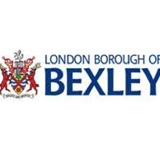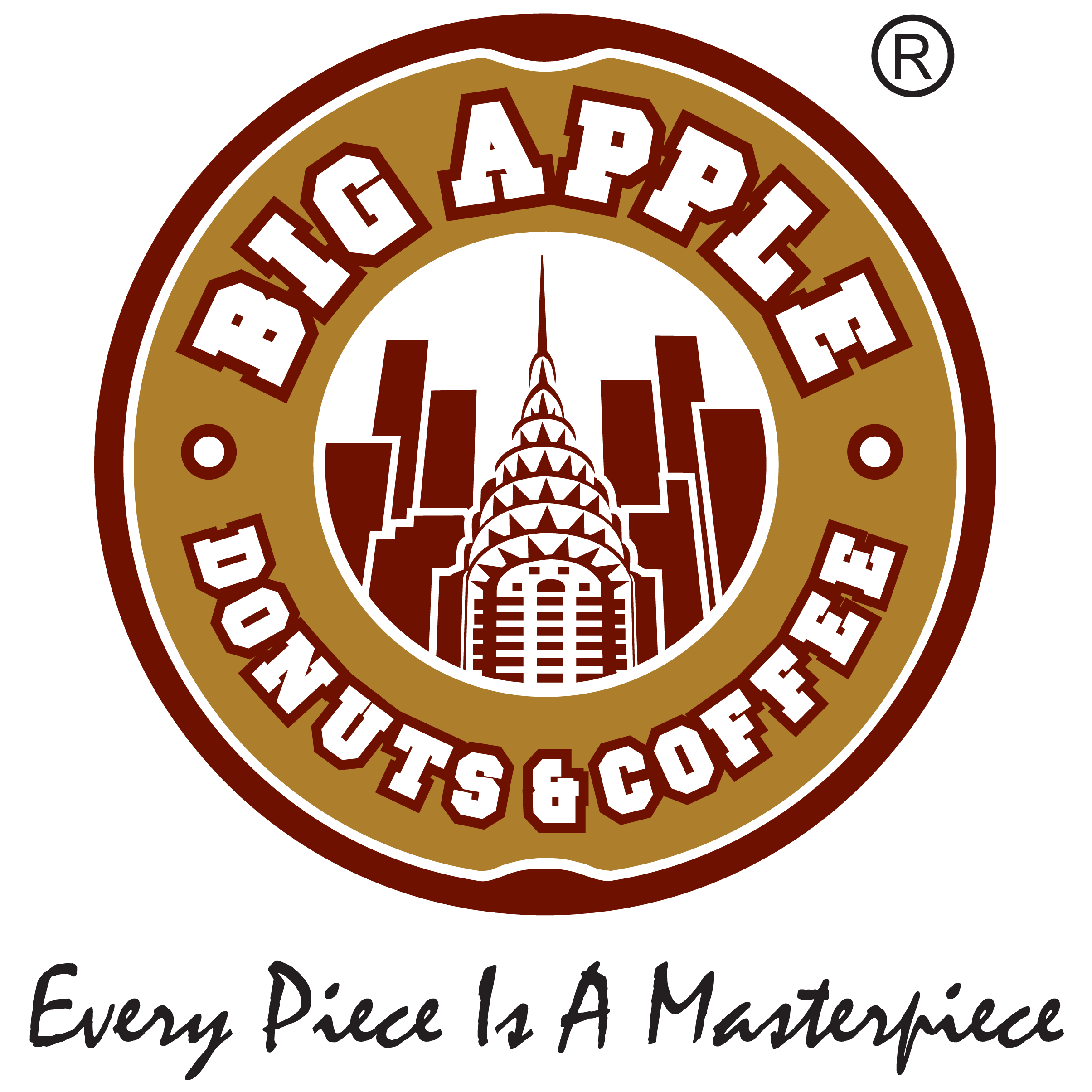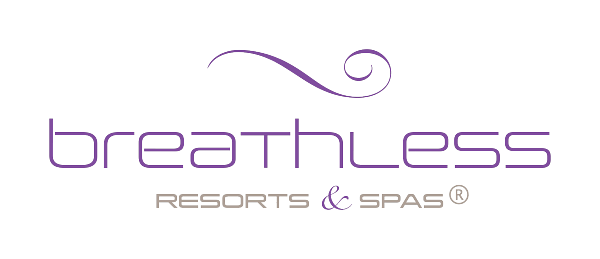Information
-
Document No.
-
Audit Title
-
-
Client / Site
-
Conducted on
-
Prepared by
-
Location
-
Personnel
-
Proprietor
-
Manager
-
Primary Authority
-
Opening hours
-
Tel. no.
Red Flag Issues from this inspection
POLICY ARRANGEMENTS
-
Food premises registration document available & signed
This Inspection
-
Type of visit
-
Purpose
-
Intervention
-
Unannounced visit?
Background
-
Customers
-
Comments
-
Is food solely for consumption on the premises?
Foods
-
What types of food are sold
-
Eggs/Soft cheese?
-
What processes apply?
- Storage
- Preparation
- Cooking
- Sale
- Delivery
-
Raw milk?
-
What processes apply?
- Storage
- Preparation
- Cooking
- Sale
- Delivery
-
Other dairy?
-
What processes apply?
- Storage
- Preparation
- Cooking
- Sale
- Delivery
-
Open/unwrapped raw meat?
-
What processes apply?
- Storage
- Preparation
- Cooking
- Sale
- Delivery
-
Per packed raw meat?
-
What processes apply?
- Storage
- Preparation
- Cooking
- Sale
- Delivery
-
Fish and/or shellfish?
-
What processes apply?
- Storage
- Preparation
- Cooking
- Sale
- Delivery
-
Fruit &vegetables?
-
What processes apply?
- Storage
- Preparation
- Cooking
- Sale
- Delivery
-
Cooked meat, or fish/shellfish?
-
What processes apply?
- Storage
- Preparation
- Cooking
- Sale
- Delivery
-
Fish and/or shellfish (open)?
-
What processes apply?
- Storage
- Preparation
- Cooking
- Sale
- Delivery
-
Fish and/or shellfish (wrapped/packed)?
-
What processes apply?
- Storage
- Preparation
- Cooking
- Sale
- Delivery
-
Sandwiches/pies?
-
What processes apply?
- Storage
- Preparation
- Cooking
- Sale
- Delivery
-
Confectionary?
-
What processes apply?
- Storage
- Preparation
- Cooking
- Sale
- Delivery
-
Alcoholic drinks?
-
What processes apply?
- Storage
- Preparation
- Cooking
- Sale
- Delivery
-
Alcoholics beverages/soft drinks?
-
What processes apply?
- Storage
- Preparation
- Cooking
- Sale
- Delivery
-
Bakery?
-
What processes apply?
- Storage
- Preparation
- Cooking
- Sale
- Delivery
-
Other?
-
Specify?
-
What processes apply?
- Storage
- Preparation
- Cooking
- Sale
- Delivery
General premises
-
Are the Walls in good repair, non absorbent and easy to clean?<br> <br>Walls Y N Floors Y N Ceilings Y N Doors and Windows Y N <br> <br>
-
Are the floors in good repair, non absorbent and easy to clean? <br> <br>
-
Are the ceilings in good repair, non absorbent and easy to clean?<br> <br>
-
Are the doors and windows in good repair, non absorbent and easy to clean? <br> <br>
-
Do you have toilets on the premises?
-
Do you have a wash hand basin nearby with a supply of hot water, soap and hygienic hand drying facilities?<br> <br>
Cooking & Preparation Methods
-
Salting, curing or smoking?
-
Traditional/full preparation?
-
Cooking from chilled?
-
Cooking from frozen?
-
Open foods handled?
-
Cook/chill?
-
Cook/freeze?
-
Foods prepared in advance?
-
Hot holding?
-
Reheating?
-
Foods cooked in advance?
-
Raw egg dishes?
-
Sandwich preparation?
-
Preparing meat products?
-
Microwaving?
-
Blast chill/freezing?
-
Packing?
-
Other (specify)
High Risk Processes
-
Sous vide?
-
Vacuum packing?
-
Meat slicing?
-
Bottling?
-
Chemical disinfection?
-
Other?
1. NATURE OF OPERATION & FOOD SOLD
-
General information, size of business, no of covers, weekly, high risk foods present ...
2. FOOD SAFETY MANAGEMENT SYSTEM (FSMS)
-
Type
-
Front section completed?
-
Staff training completed?
-
Cleaning schedule completed?
-
Cleaning schedule - alternative in place?
-
Is cleaning an issue?
-
Supplier details complete & up to date?
-
Opening check complete?
-
Reviews carried out?
-
Observations
-
Has an adequate analysis been done?
-
Have all of the food safety hazards been properly identified?
-
Have adequate/appropriate controls been identified?
-
Are control measures in place?
-
Have critical limits been properly set?
-
Are controls adequately monitored?
-
Are the monitoring procedures being maintained?
-
Have appropriate corrective actions been identified?
-
Are corrective actions being taken as specified?
-
Are reviews carried out?
-
Is there adequate documentation e.g. HACCP plan etc?
-
Are appropriate records maintained (e.g. Temp records etc)?
-
Outcome
ARRANGEMENTS
-
Is there a HACCP plan in place that follows the codex principles?
-
When is the HACCP system due for review?
-
Is the system applicable to the processes and food groups that are being prepared?
-
Are flow charts available for processes, and have they been verified?
-
Are monitoring and verification procedures in place and operating effectively?
Complaints procedure
-
Procedure understood & followed
-
Customer comments book available
-
Suitable replies to customers comments entered
3. TRAINING, SUPERVISION, & INSTRUCTION
-
How many staff handle open food?
-
Is induction training given?
Food Hygiene training
-
Managers & all food handling staff fully trained in appropriate safety & hygiene requirements?
-
Details recorded on personal training files?
-
Photocopies of certificates, etc available & held on file?
-
Available for each member of staff
-
Completed, dated, signed & up to date
-
Food hygiene training given during induction
-
Are staff trained to level 2?
-
How many staff have level 2 training or equivalent?
-
Member of staff
Staff member
-
Name
-
Course
-
Date
-
Certificate No.
-
Are staff trained to level 3?
-
How many staff have level 3 training or equivalent?
-
Member of staff
Staff member
-
Name
-
Course
-
Date
-
Certificate No.
-
Are staff trained to advanced/level 4?
-
Are staff trained to level 3?
-
How many staff have level 4 training or equivalent?
-
Member of staff
Staff member
-
Name
-
Course
-
Date
-
Certificate No.
-
Outcome
4. PURCHASING
-
Hazards: contamination of product, inherent pathogens, bacterial growth ...
Controls: use reputable supplier, agree specification of product ...
Monitoring: visual checks, temperature checks, date marking, records ... -
Observations
-
Outcome
Food Safety System / Due Dilligence records
-
Has an approved supplier list been created?
-
Have any checks been conducted on suppliers or certification obtained?
-
Has a hygiene policy been created and communicated to staff?
-
Are policies in existence relating to allergens, product withdrawal, food poisoning, glass, traceability and supplier approval?
5. WORKING PRACTICES
a) DELIVERY / RECEIPT
-
Hazards: contamination of product, inherent pathogens, bacterial growth ...
Controls: use reputable supplier, agree specification of product ...
Monitoring: visual checks, temperature checks, date marking, records ... -
Observations
-
Outcome
STORAGE & DELIVERY
-
Condition of delivery vehicles & driver checked & recorded
-
Condition of food checked and recorded
-
Chilled food delivered @ +8 deg C or colder
-
Frozen food delivered @ -12 deg C or colder
-
Date coding & food quality checked
-
Abused or damaged goods rejected
-
Deliveries not left unattended, uncovered, etc
-
Unwrapping/ decanting carried out in separate areas
Storage
-
Chilled/ frozen food stored without delay
-
Food stored on suitable racking off the floor (6")
-
Environmental factors satisfactory (temperature, etc)
Refrigerated / Freezer Storage
-
High risk chilled food stored @ or below +8 deg C
-
Frozen food storage @ -18 deg C or colder
-
Defrosted food never refrozen
-
Food containers sanitised before use
-
Use by date codes transferred to containers
-
Food not stored in open containers
-
Cardboard/wooden containers not used in refrigerators
-
Food not stored in open tins
-
Glassware not used to store food in refrigerators
-
In multi-use refrigerators are raw & cooked products separated to avoid the risk of cross contamination
-
Are egg's stored under refrigerated conditions & date marked
-
Refrigerators not overstocked/overloaded
-
Strict stock rotation being observed
-
All "open foods" kept wrapped, inc cheese, etc
Ambient Storage
-
Storage temperature is appropriate
-
Protective light shields (diffusers) cover all light sources
-
No open dried goods
-
Food not stored near chemicals
-
Date codes transferred to decanted food
-
Strict stock rotation being observed
-
No out of date dried goods identified
b) PREPARATION
-
Hazards: contamination/cross contamination, temperature abuse ...
Controls: minimise prep time & handling, separate prep areas/equipment, cleaning & disinfection, personal hygiene ...
Monitoring: supervision, cleaning schedule, colour coded equipment, records .... -
Observations
-
Outcome
General
-
Adequate protection for display avoiding contamination
-
Display units cleaned & sanitised after use
-
Left over meat / fish is not re-used in other made up dishes
-
Glass / crockery containers or other items avoided
-
Glass breakage procedures understood & operated
FOOD PREPARTION
Sanitisation
-
Adequate supplies of sanitiser available & used
-
Correct application of sanitiser & staff appropriately trained
-
Chopping boards, knives, slicers, etc, sanitised / washed after use
-
Salad wash available & used
-
Detergent sanitiser used in dishwasher or correct manual washing methods used
Initial Food Preparation
-
Raw food not prepared near cooked food & utensils/surfaces sanitised between each use
-
Disposable towels used to wipe down food surfaces
-
Frozen food defrosted under refrigerated conditions
-
Cold food refrigerated between preparation & service
-
High risk foods kept out of refrigerated conditions as short as possible during preparation
-
All high risk foods not left unattended e.g. During breaks
-
All food prepared with minimum delay
Pre-cooking & Reheating
-
No unnecessary pre-cooking
-
If hot food has to be per-cooked are suitable control measures in place & strictly followed
-
If cold food has to be pre-cooked are suitable control measures in place & strictly followed
-
Blast chiller available if pre cooking regularly & short cook chill code of practice applied
-
Blast chiller temperatures / time records available & completed
-
If no blast chiller, are hot foods chilled quickly
Allergens
-
Allergen control is being managed effectively?
c) COOKING
-
Hazards: inadequate cooking, direct and cross contamination ..
Controls: cooking temp/time, size of joint (max 2.5 kg), bulk ....
Monitoring: use of probe thermometer, records, probe calibration/disinfection .... -
Observations
-
Outcome
6. TEMPERATURE CONTROL
A) COOLING
-
Hazards: growth of surviving spores, further contamination
Controls: cool rapidly, keep food covered
Monitoring: time and temperature checks, records, cook-chill? -
Outcome
Cold Food
-
Display units not overloaded
-
Food on display kept below +8 deg C or 4 hour rule applied
-
Leftover food from display above +8 deg C disposed of
-
Buffets out for a Maximum time of 4 hours
B) HOT HOLDING
-
Hazards: bacterial growth, further contamination
Controls: keep food above 63C, use clean equipment, cover if possible
Monitoring: use probe thermometer, records -
Outcome
Hot Food
-
All high risk food cooked to a core temperature of @ least 75 deg C
-
Hot food display temperature kept above 63 deg C
-
Random temperature records maintained relating to high risk foods?
-
Hot food from display never reheated
C) REHEATING
-
Hazards: survival of bacteria, bacterial toxins not denatured
Controls: thorough reheating
Monitoring: use probe thermometer, records -
Outcome
D) SERVICE & DISPLAY
-
Hazards: physical or bacterial contamination, growth of bacteria
Controls: time/temperature checks,separation, cleanliness of equipment
Monitoring: visual checks, temperature checks, records -
Outcome
Food Service
-
Delays between preparation & service kept to a minimum
-
Cold food refrigerated between preparation & service
-
Food covered where possible
-
If no blast chiller available, is action taken to chill food as quickly as possible & used within 24 hours
-
4 hour rule taken into account
E) CHILLED, FROZEN, & AMBIENT STORAGE
-
Hazards: contamination of product, inherent pathogens, bacterial growth
Controls:
Monitoring: visual checks, temperature checks, date marking, records -
Outcome
F) TEMPERATURE MONITORING
-
Probe wipes available
-
Probe calibrated monthly & checks recorded
-
Annual formal calibration & certification available
-
Temperature test medium available in all refrigerators & used
-
Probe used to check fridge & freezer temperatures
-
Frequency check in line with company procedures (or at least twice a day)
-
Probe breakdown procedures in place
-
Action taken for unsatisfactory product temperatures
Temperature Records
-
Food deliveries (chilled & frozen)
-
All refrigerators
-
All freezers
-
High risk hot food core temperatures
-
Cold food display / salad service units (if applicable)
-
Hot food display/ service units (if applicable)
-
Records kept for at least 3 months
7. STRUCTURE
Loose Fittings
-
Any loose fittings, nuts,bolts, screws, drawing pins, etc seen above food preparation areas
-
Notice boards not positioned above or in close proximity to food preparation areas
-
No drawing pins on notice boards
Walls
-
Smooth, impervious, non flaking
-
Light coloured
-
Capable of being easily cleaned
-
Undamaged
Flooring
-
Non-absorbent
-
Anti-slip
-
Without crevices
-
Capable of being thoroughly cleaned
-
Resistant to acids, grease, salts, etc
-
Trapped drain gullies provided
-
Sufficient gradient for drain off (1 in 60 minimum)
Ceilings
-
Smooth, impervious, non flaking
-
Fire resistant
-
Light coloured
-
Coved at wall joints
-
Capable of being thoroughly cleaned
Maintenance
-
Defect reporting system in place
-
System for auctioning urgent defects in place
Sanitary Provision
-
Provision of adequate facilities for staff
-
Provision of adequate facilities for others
-
Clean
-
Provision of suitable washing / drying facilities
-
Hot & cold running water
8. CONDITION OF EQUIPMENT
Wood, Packing Materials, Cloths, Wire Wool, etc
-
Crude outer packaging not on food preparation surfaces
-
Wooden handled equipment not in use
-
No worn / frayed cloths, tea towels, etc
-
Wire-wool, brillo pads, metal scourer, etc not in use
Refrigeration & Maintenance Records
-
Microwave emission checks carried out @least annually
-
Microwave emission test records available
-
Refrigeration maintenance contract in place
-
Records of call outs / actions retained
-
Dishwasher maintenance
-
EHO inspection reports available & action points if any rectified
-
Cooking oil stored in bundled area
-
Waste oil disposed of through recognised contractor
-
Out of date or unfit food appropriately disposed
-
Glass breakage procedure in place & operated
Changing Rooms
-
Adequate facilities provided
9. CLEANING & DISINFECTION
A) PREMISES
Cleaning schedule, etc
-
Cleaning schedule on display & implemented
-
Schedule monitored daily & checks recorded
-
Deep clean contract in place & included within cleaning schedule
-
Deep cleaning records retained
-
Deep cleaning contractors risk assessments available & held on file
-
Deep cleaning contractors Safe Systems of Work available & held on file
-
All cleaning staff fully trained &competent to carry out specialist works
-
Photographic evidence available following extract duct deep cleaning
Cleaning Standards
-
Floors & walls / floor / equipment junctions
-
Wall surfaces to hand height (low level)
-
High level areas (who's responsibility)
-
Cooking equipment, including ovens, grills, fryers, etc
-
Internal surfaces of refrigerators &freezers
-
Refrigerator & freezer doors seals
-
Food preparation surfaces, including chopping boards
-
Wash hand basins & sink units
-
Overall effectivity (include results of swab tests, if conducted)
B) EQUIPMENT
-
Drink dispensers, ice machines & post mix machines
-
Food preparation equipment, e.g. Food slicers, mixers, etc
-
Crockery
-
Cooking utensils
-
Utensils store age appropriate
-
Cleaning equipment colour coded
10. TRANSPORT & DELIVERY
11. PEST CONTROL
-
Pest control contract in operation and BPCA member?
-
Annual review meeting conducted with contractor?
-
Contractor escorted around the premises?
-
Pest contract log book retained on site and available for inspection?
-
Actions from contractors visits are closed out?
-
Suitable preventive measures in place for controlling pests & vermin, including clean areas externally, adequate proofing, sound structures, etc?
-
Un-screened windows / doors kept closed?
-
No active infestation noted?
12. WASTE
-
Have all waste products been identified & assessed
-
Disposed of through authorised waste disposal company
-
Are duty of care waste transfer notes available & held on file
13. PERSONAL HYGIENE
Personal Hygiene Standards
-
All food handlers issued and trained in good hygiene guidance
-
Finger nails are short, unpolished & clean
-
Good personal hygiene practices being followed (seen @ time of inspection)
-
Long hair properly tied back, including waiting staff
-
Open sores, cuts, or splints & bandages on hands are completely covered while handling food.
-
No open wounds, sores, etc noted.
Clothing
-
Clean protective over-clothing worn
-
Suitable head covering provided & worn for all working within the food preparation area & food rooms
-
Over-clothing not worn outside work
-
Personal clothing stored appropriately
Bad Habits
-
Staff not eating or drinking in food rooms
-
Staff not coughing / sneezing over food, etc
-
Staff not fondling hair, picking nose, scratching, etc
-
No evidence of staff smoking in food rooms
Hand Washing
-
Did staff wash their hands between tasks (handling raw meat, seafood,, mops, garbage, etc).
-
Do staff wash their hands properly (hands are washed or gloves are changed at critical points)
-
"Wash you hands now" notices displayed in WC areas
-
Bacterial soap provided at all wash hand basins
-
Disposable paper towels provided & used to dry hands
-
Only approved jewellery worn
Staff illness
-
Management fully aware of procedures to follow in the event of staff illness
-
Catering staff fully aware of procedures to follow in the event of illness
-
Return to work sickness forms / questionnaires completed
Pre employment Screening
-
Pre-employment questionnaires completed
-
Report of infection declaration forms signed
Vending Machines
-
All drinks / food vending machines cleaned daily
-
Hygiene record card inside (as appropriate)
-
Sanitiser used to clean dispense areas
-
All staff fully trained
-
Acceptable standards of cleanliness
Additional Observations
Recommendations
-
Client's Representative
-
Auditors Signature














